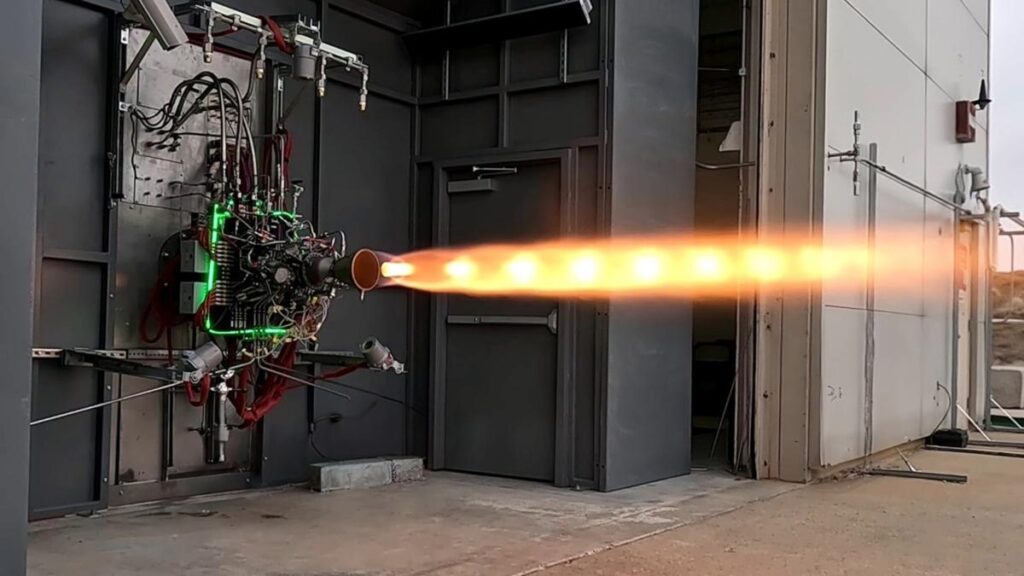Colorado-based rocket propulsion startup Ursa Major has achieved a significant milestone in developing its Draper engine, a 4,000-pound-thrust liquid rocket engine designed for hypersonic applications. The company recently announced the successful completion of hot-fire tests at its facility in Berthoud, Colorado, marking a significant step forward in the engine’s development.

The Draper engine, which utilizes a non-cryogenic kerosene and hydrogen peroxide fuel combination, offers several key advantages over traditional liquid rocket engines. The storable propellants simplify logistics and reduce costs, making the engine well-suited for hypersonic defence, in-space propulsion, and responsive launch capabilities.
One of the standout features of the Draper engine is its throttle control and manoeuvrability. The closed-cycle architecture allows the engine to run on either decomposed hydrogen peroxide alone or a combination of hydrogen peroxide and kerosene. This flexibility enables precise movements and adjustments in space without excessive propellant consumption, potentially extending the lifespan and capabilities of satellites and spacecraft.
In March 2024, Ursa Major conducted a series of hot-fire tests of the Draper engine prototype, successfully igniting the engine more than 50 times. Each test lasted several seconds, validating the basic design and performance of the engine.
Founder and CEO Joe Laurienti emphasized the significance of these tests, stating, “We’re excited with how quickly the development program has progressed and look forward to fielding the engine for hypersonics and in-space applications in the coming years.”
A contract with the Air Force Research Laboratory (AFRL) has supported the development and testing of the Draper engine. The funding has enabled Ursa Major to construct a dedicated test stand at its headquarters, facilitating faster iteration and development of the engine.
Dr. Shawn Phillips, Chief of AFRL’s Rocket Propulsion Division, praised Ursa Major’s rapid progress and highlighted the importance of collaboration between the Air Force, Space Force, and industry partners in delivering advanced capabilities.
The Draper engine’s unique design and capabilities make it a promising solution for various applications. The engine can effectively simulate hypersonic threats in hypersonic defence, addressing a critical gap in America’s hypersonic capabilities.
For in-space propulsion, the Draper engine’s storable propellants and throttle control make it an attractive option for lunar landers and orbital transfer vehicles. The engine’s ability to perform high-impulse manoeuvres and precise orbital insertions could extend the mission capabilities of satellites and spacecraft.
Following the successful hot-fire tests, Ursa Major plans to continue developing and maturing the Draper engine. The company expects to achieve engine qualification in 2025 and is in discussions with potential partners for test flights in 2026.
The successful ground tests of Ursa Major’s Draper engine represent a significant advancement in US hypersonic capabilities. Combining solid rocket motors’ storability with the throttle control of liquid engines, the Draper engine offers a versatile solution for hypersonic defence and in-space propulsion.
TLDR:
- Ursa Major’s Draper engine completes hot-fire tests
- The 4,000-pound-thrust liquid engine uses non-cryogenic, storable propellants
- The engine offers throttle control and manoeuvrability for hypersonic defence and in-space propulsion
- Development funded by Air Force Research Laboratory contract
- Engine qualification expected in 2025, test flights planned for 2026

